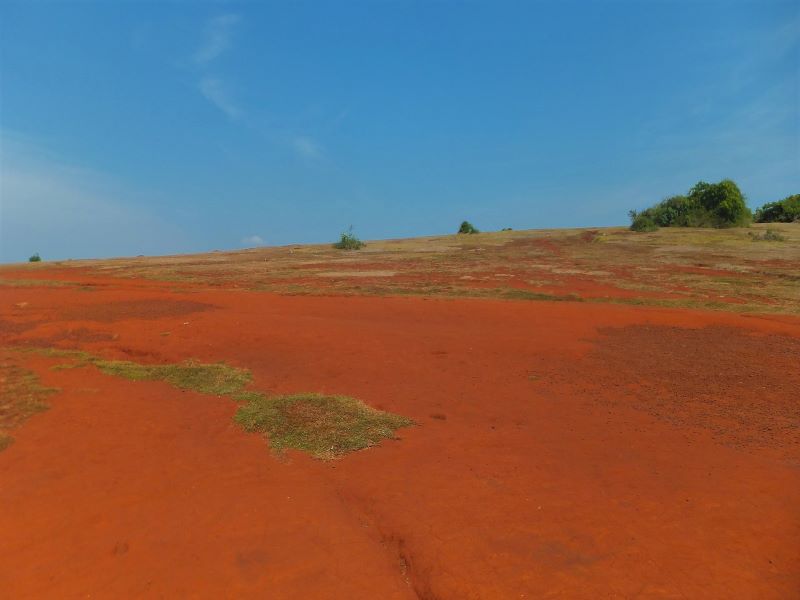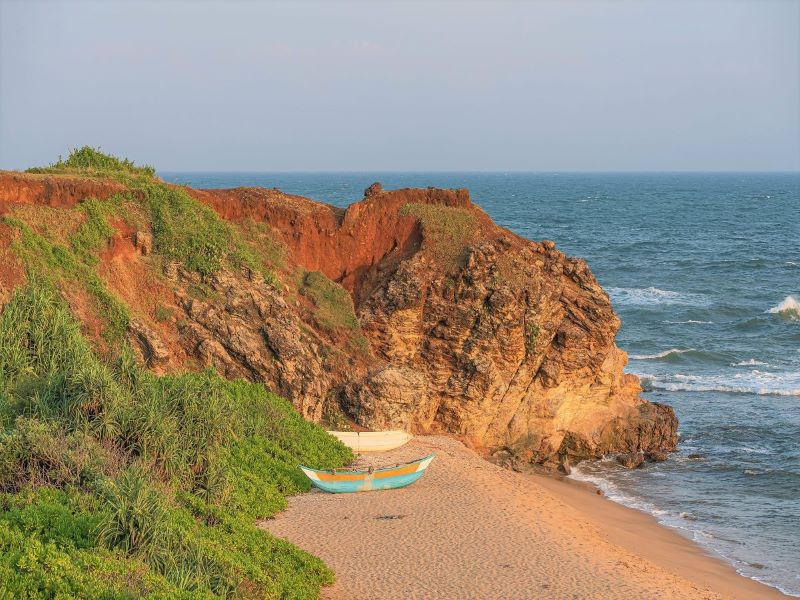Ussangoda is a designated archaeological site with special biological and geographical values. It is located in Amabalanthota in the Hambantota district of Southern Sri Lanka. Due to its unique vegetation, Ussangoda was declared, a National Park in 2010.
Geological and Archeological Significance
Ussangoda is one of the four serpentine sites in Sri Lanka. The landscape of the area is distinct, with red soil extending in all directions and stunted grass and moss growing in an uneven pattern. Research on the area suggests that the higher concentrations of heavy metals in serpentine soil, inhibit the plant growth, thus giving its unique vegetation.
Some believe this area was hit by a meteorite years ago, and Ussangoda is a part of that meteor. Ussangoda is located close to another archeological site, ‘Miniha Gal Kanda’ where pre-historic human artifacts were discovered. Ussangoda is a part of sea turtle breeding zones.



Ussangoda: Relations with the Ramayana Legend
According to ancient myths, Ussangoda is one of the places which King Ravana used to land his aircraft. Some ancient stories suggest that the distinct red color soil of this area is a result of Hanuman’s actions. People believe that Hanuman(the monkey god of Ramayana) came here and burnt the land which made the soil turn red. Because of its relation to the Ramayana legend, Ussangoda has become a Hindu pilgrimage site on the Ramayana trail of Sri Lanka.
